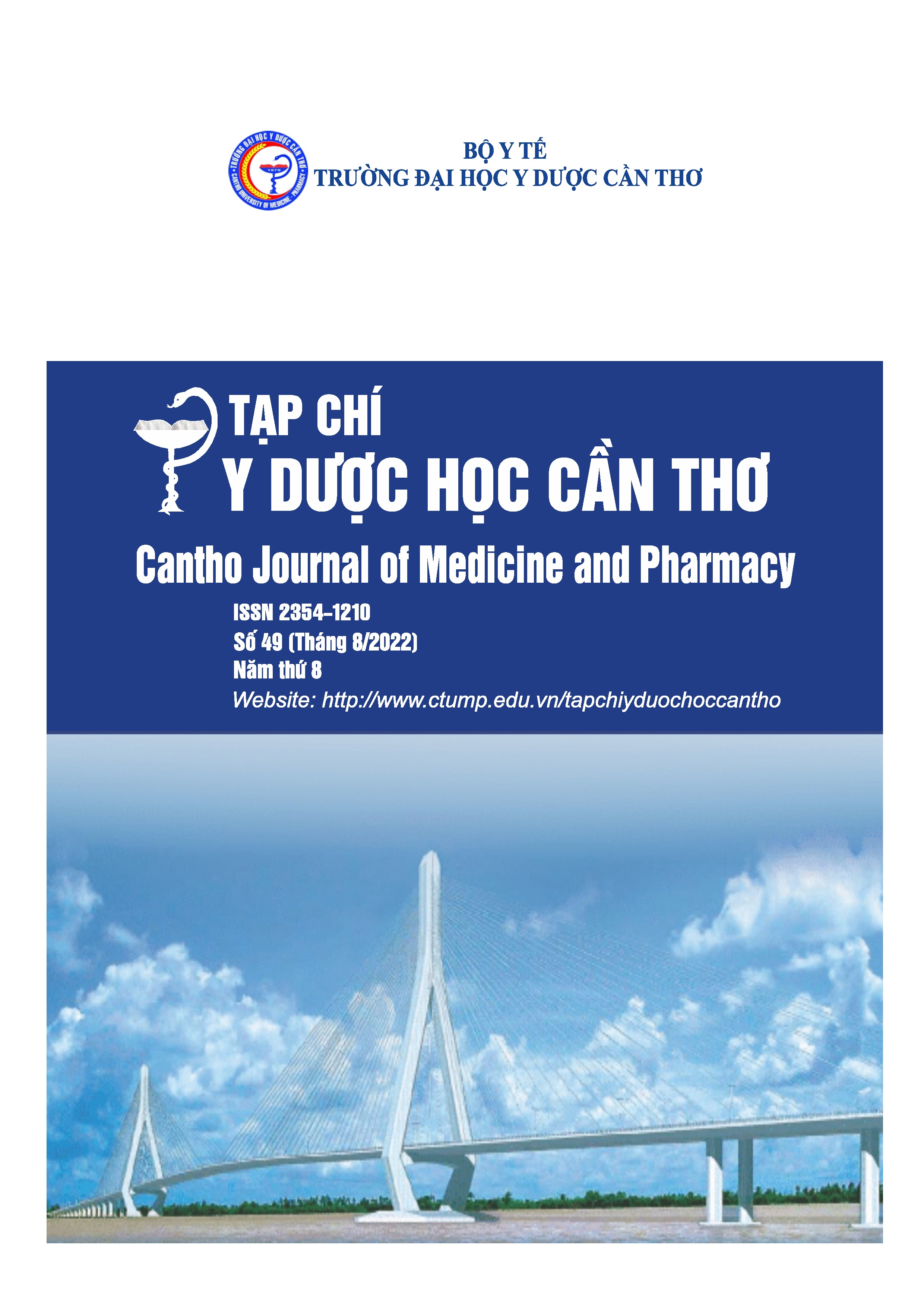DRUG-RELATED PROBLEMS AND RISK FACTORS OF OUTPATIENT PRESCRIBING AT A PEDIATRIC HOSPITAL IN CAN THO CITY
Main Article Content
Abstract
Background: Drug-related problems (DRPs) are one of the leading causes of treatment failure, especially in pediatric patients. Objectives: To assess DRPs and identify associated factors of DRPs in outpatient prescribing at a Pediatric hospital in Can Tho, Viet Nam. Materials and methods: We performed a cross-sectional study with 2930 prescriptions which were randomized from March 1st to April 30th, 2021. Clinical pharmacists have identified DRPs against reliable databases and classified DRPs according to the Pharmaceutical Care Network Europe Association (PCNE) V9.1; these DRPs were reevaluated by the consensus of medical experts using evidencebased medicine. Results: The rate of prescriptions with at least 1 DRP was 69.9%. High dose and time of dosing were the most common DPRs with the proportions 39.8% and 40.1%, respectively, and drug interactions were the least DRPs 0.6%. Patients with respiratory system diseases and comorbidities, prescriptions from college-educated physicians) and prescriptions containing more than four drugs had a higher risk of DRPs than others (OR >1; p <0.05). Conclusion: Time of dosing and the high dose was the DRPs with the highest frequency. The number of drugs in prescriptions, patients with comorbidities and respiratory system diseases, and physicians’ qualifications were risk factors associated with the occurrence of DRPs in the prescriptions.
Article Details
Keywords
Pediatrics, DRPs, prescribing, outpatients, risk factors, Can Tho
References
2. Bộ Y tế (2015), Hướng dẫn chẩn đoán và điều trị một số bệnh thường gặp ở trẻ em, Hà Nội.
3. Abunahlah N., Elawaisi A., Velibeyoglu F.M., et al. (2018), “Drug related problems identified by clinical pharmacist at the Internal Medicine Ward in Turkey”, Int J Clin Pharm, 40(2), pp. 360-367.
4. AlAzmi A.A., AlHamdan H., Ahmed O., et al. (2019), “Impact of the e‐prescribing system on the incidence and nature of drug‐related problems in children in a Saudi hospital”, Int J Pharm Pract, 27(6), pp.578-581.
5. Bech C.F., Frederiksen T., Villesen C.T., et al. (2018), “Healthcare professionals’ agreement on clinical relevance of drug-related problems among elderly patients”, Int J Clin Pharm, 40(1), pp.119-125.
6. Birarra M.K., Heye T.B., Shibeshi W. (2017), “Assessment of drug-related problems in pediatric ward of Zewditu Memorial Referral Hospital, Addis Ababa, Ethiopia”, Int. J. Clin. Pharm, 39(5), pp.1039-1046.
7. Bizuneh G.K., Adamu B.A., Bizuayehu G.T., et al. (2020), “A prospective observational study of drug therapy problems in Pediatric Ward of a Referral Hospital, Northeastern Ethiopia”, International Journal of Pediatrics, 2020, pp.1-6.
8. Jafarian K., Allameh Z., Memarzadeh M., et al. (2019), “The Responsibility of Clinical Pharmacists for the Safety of Medication Use in Hospitalized Children: A Middle Eastern
Experience”, J Res Pharm Pract, 8(2), pp.83-91.
9. Paediatric Formulary Committee (2019), British National Formulary for Children, British Medical Association, The Royal College of Paediatrics and Child Health, and The Neonatal and Paediatric Pharmacists Group, London.
10. Pharmaceutical Care Network Europe Association (2020), PCNE classification V9.1
11. Rashed A.N., Neubert A., Tomlin S., et al. (2012), “Epidemiology and potential associated risk factors of drug-related problems in hospitalized children in the United Kingdom and Saudi Arabia”, Eur J Clin Pharmacol, 68(12), pp.1657-1666
12.Wimmer S., Neubert A., Rascher W., et al. (2015), “The Safety of Drug Therapy in Children”, Dtsch Arztebl Int, 112, pp.781-787.
13. World Health Organization (2007), “Promoting safety of medicines for children”, Geneva, Switzerland 2007.


